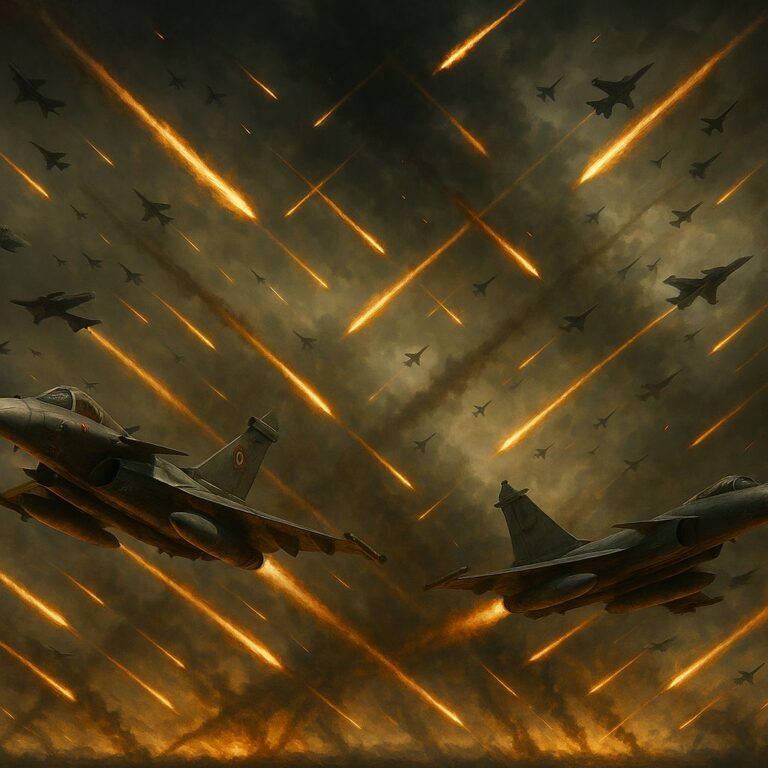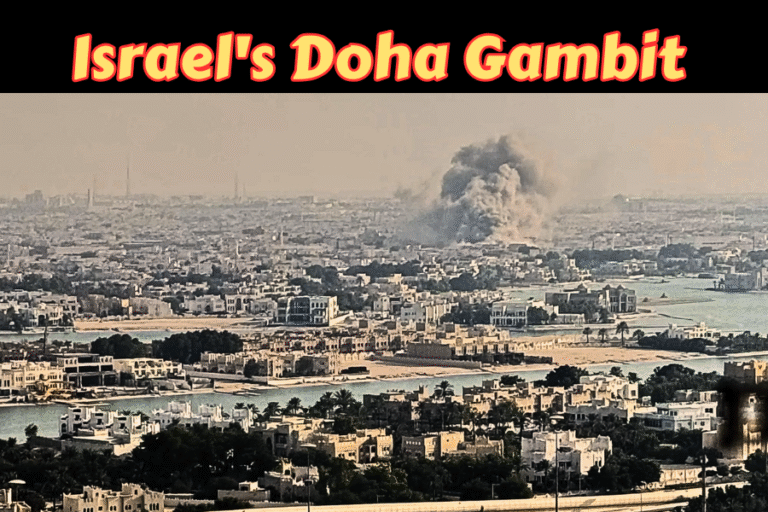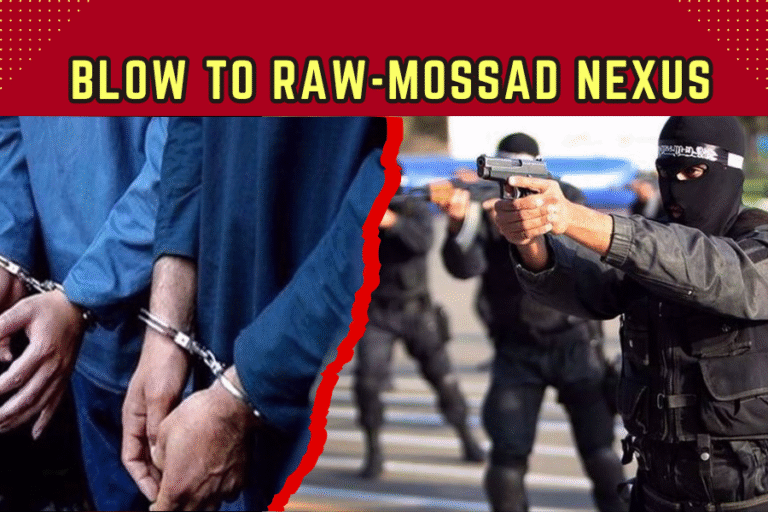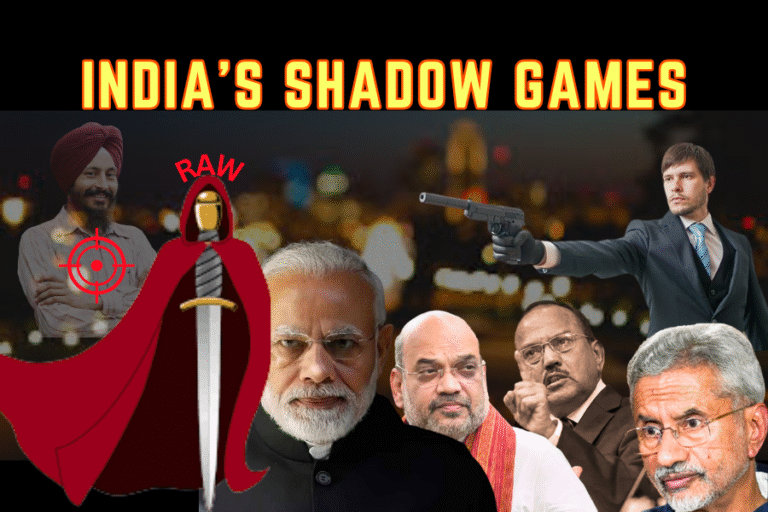(By Khalid Masood)
India parades itself as a rising global power—but the world must not be fooled. Beneath its glittering façade of economic growth and global diplomacy lies a darker, more sinister truth: India has become a regional bully, obsessed with subjugating South Asia, particularly Pakistan, through its ruthless “3D Strategy” — Destabilization, Defamation, and Diplomatic Isolation.
From stoking violence in Balochistan, to engineering false flag operations like the Pahalgam attack, to manipulating platforms like FATF to smear Pakistan’s name—India’s covert war is relentless. It operates not only on the battlefield, but also in the media, cyberspace, and diplomatic corridors of the world.
Yet, despite these vicious campaigns, Pakistan stands unbroken. Time and again, our nation has faced Indian hostility with unmatched courage and unwavering resolve. This article lays bare India’s hegemonic ambitions and exposes its dirty war against Pakistan, while proudly highlighting our resilience, unity, and historic victories against Indian aggression.
Destabilizing Pakistan: Sowing Chaos from Within
India’s first prong—Destabilization—targets Pakistan’s internal security through covert operations, allegedly orchestrated by its spy agency, the Research & Analysis Wing (RAW). Pakistani officials, including former Foreign Minister Shah Mehmood Qureshi, have accused India of sponsoring terrorism in Balochistan, a resource-rich province critical to the China-Pakistan Economic Corridor (CPEC) (Radio Pakistan, 2025). The 2016 arrest of Kulbhushan Yadav, a former Indian naval officer, is a cornerstone of these claims. Yadav confessed to RAW’s role in funding Baloch separatists and orchestrating attacks, per Pakistan’s Inter-Services Public Relations (Dawn, 2016). Though India denied his active involvement, Pakistan presented dossiers to the UN, alleging Indian-backed violence (Radio Pakistan, 2025).
The Tehrik-i-Taliban Pakistan (TTP), responsible for attacks like the 2022 Peshawar mosque bombing, is another alleged beneficiary of Indian support. Pakistani intelligence claims RAW used pre-2021 Afghan territory to funnel arms and funds to TTP, aiming to destabilize Khyber Pakhtunkhwa (The Express Tribune, 2024). Sectarian violence in Karachi and unrest in the former FATA region are also attributed to Indian proxies, “state-sponsored proxies of India” targeting civilians in Balochistan and KP (X, 2025). While India denies these allegations, the surge in Balochistan attacks—e.g., the 2022 BLA suicide bombing at Karachi’s Confucius Institute—raises suspicions of external meddling (U.S. State Department, 2023). Pakistan’s resilience, exemplified by the PAF’s 1965, 1971, 2019 and 2025 aerial victories, ensures these plots falter against a united nation.
Defaming Pakistan: A Global Smear Campaign
The second prong—Defamation—sees India painting Pakistan as a state sponsor of terrorism to erode its international credibility. The 2019 Pulwama attack, killing 40 Indian personnel, was swiftly blamed on Pakistan-backed Jaish-e-Mohammed (JeM), leading to India’s Balakot airstrikes. Pakistan’s Operation Swift Retort, downing two IAF jets and capturing Wing Commander Abhinandan Varthaman, exposed India’s hasty accusations (Dawn, 2019). Pulwama was a false flag operation, timed with a U.S. dignitary’s visit, a pattern seen in the 2000 Chittisinghpura Sikh massacre during President Clinton’s trip (The Guardian, 2000).
The 2025 Pahalgam attack, killing 26 tourists, follows this playbook. India immediately accused Pakistan-linked The Resistance Front (TRF) without evidence, launching Operation Sindoor (Wikipedia, 2025). Pakistan’s Defense Minister Khawaja Asif called it an Indian-orchestrated false flag, who criticized India’s refusal of an independent probe. India’s media amplifies these narratives, with outlets like Srivastava Group running fake news sites to discredit Pakistan (ISSRA, 2024). The Financial Action Task Force (FATF) is another battleground, where India lobbied for Pakistan’s grey-listing (2018–2022), citing terror financing, despite Pakistan’s compliance by 2022 (U.S. State Department, 2023). Pakistan’s diplomatic counteroffensive, backed by China and Turkey, has blunted these efforts, mirroring its 1973 feat of downing Israeli jets for Syria.
Diplomatic Isolation: Strangling Pakistan’s Global Ties
The third prong—Diplomatic Isolation—aims to marginalize Pakistan internationally. India has sabotaged the South Asian Association for Regional Cooperation (SAARC), boycotting summits since 2016 to sideline Pakistan (Geo.tv, 2023). It pressures smaller neighbors like Nepal and Maldives to limit ties with Islamabad, leveraging economic clout (Bhaskar English, 2025). At global forums, India pushes narratives of “surgical strikes,” as seen post-Uri and Balakot, despite questionable evidence (Chatham House, 2025).
India’s lobbying of Western powers, particularly the U.S. and France, seeks to curb Pakistan’s military and economic aid. Post-Pahalgam, India expelled Pakistani diplomats and suspended the Indus Waters Treaty, actions Pakistan deemed acts of war (Wikipedia, 2025). Yet, global responses, including U.S. Vice President J.D. Vance’s refusal to condemn Pakistan during his 2025 India visit, show India’s isolation strategy faltering (Al Jazeera, 2025). Pakistan’s alliances with China, via CPEC, and its role in the OIC and SCO, ensure it remains a regional player (Cove, 2024). The PAF’s 2019 Swift Retort victory underscores Pakistan’s ability to defy India’s hegemonic ambitions.
India’s Hegemonic Ambitions: A Regional Bully Exposed
India’s $5 trillion economic dream fuels its regional dominance, but its bullying tactics—snubbing Pakistan, Bangladesh, and Nepal—reveal a hegemonic agenda. The 3D Strategy is a calculated hybrid war, blending covert destabilization, global defamation, and diplomatic strangulation. National Security Advisor Ajit Doval’s “defensive offense” doctrine, advocating chaos in Balochistan to counter Kashmir, epitomizes this malice (Small Wars Journal, 2025). India’s support for Baloch separatists, like Balaach Pardili of the Balochistan Liberation Organisation, hosted in Delhi since 2009, is a glaring provocation (Wikipedia, 2025).
Yet, Pakistan stands unbowed. Its military prowess, from downing IAF jets in 2019 & 2025 to historic victories against Israel in 1967 and 1973, showcases its strength (Aviation Week, 2013). CPEC’s $65 billion investment counters India’s economic pressure, while diplomatic allies like China and Russia checkmate India’s isolation tactics (The Diplomat, 2025). Posts on X, like @PakDefTeam’s analysis of India’s failed U.S.-QUAD strategy, highlight global skepticism of New Delhi’s narrative.
A Call for Vigilance and Unity
India’s 3D Strategy is a grave threat to Pakistan’s sovereignty and South Asia’s stability. By destabilizing Balochistan, defaming Pakistan at FATF, and sabotaging SAARC, India seeks to cripple a nuclear-armed neighbor. But Pakistan’s resilience—forged in the crucible of 1965, 1971, and 2019—will prevail. The world must see through India’s false flag operations, like Pahalgam, and reject its regional bullying. Pakistan calls for unity, urging its people and allies to counter India’s nefarious designs with unwavering resolve, ensuring peace and prosperity in a region under siege by a hegemonic power.
____________________________________
Sources: Dawn, The Express Tribune, Al Jazeera, The Guardian, Wikipedia, Radio Pakistan, Geo.tv, Chatham House, Small Wars Journal, U.S. State Department, Bhaskar English, ISSRA, The Diplomat, Cove, Aviation Week, X posts.







